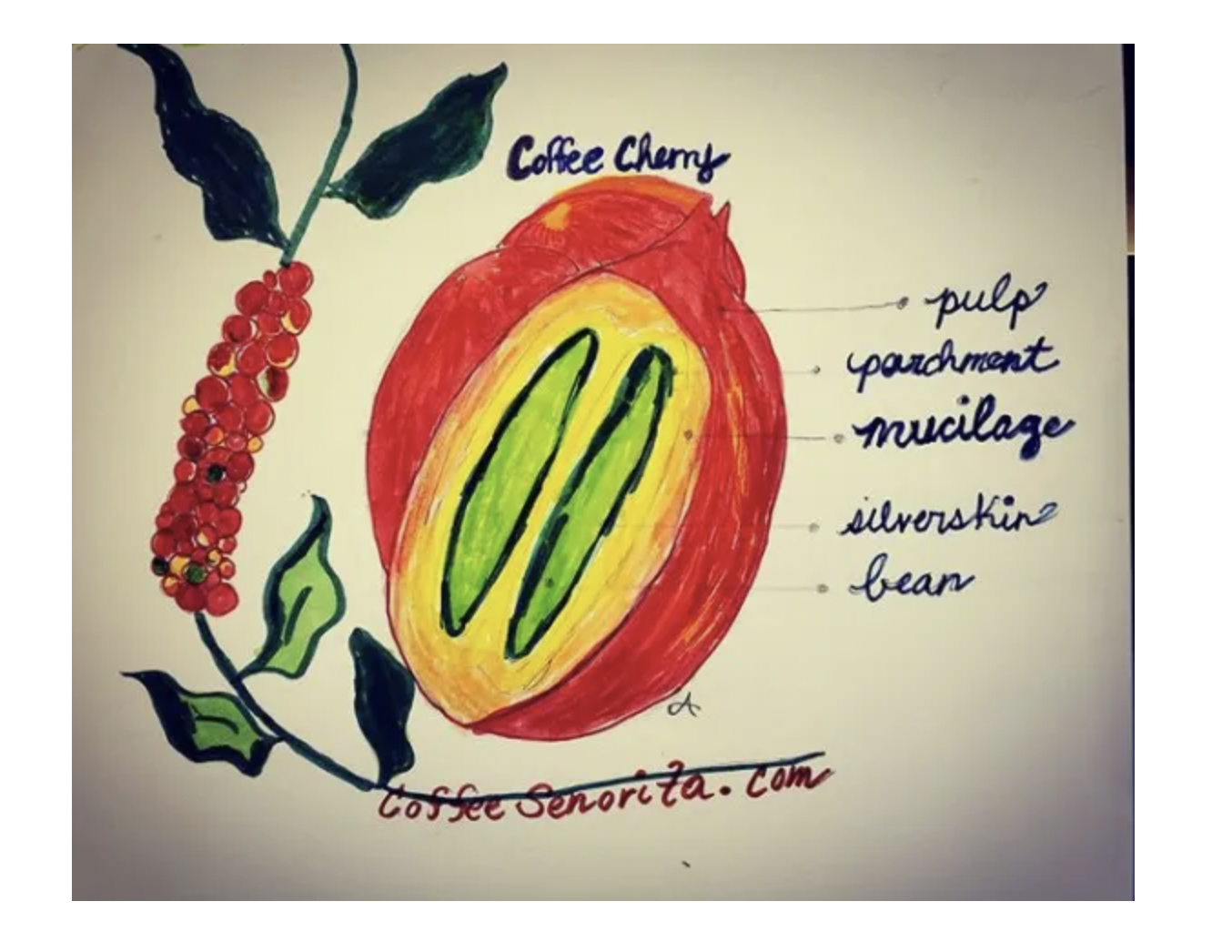Honey Processed Coffee - A Sweet Success
What is Honey-Processing?
You might think from the name, that Honey-Processing adds honey to the coffee, but you’d be wrong. However, you might not be surprised to learn that the resulting coffee tastes like honey or brown sugar. The reason is that this method of producing coffee keeps the mucilage, the white, sticky coating of the coffee cherry. As I discussed in the blog on Peruvian coffee, wet-processed coffee ferments and washes this outer coating. The fermentation of wet-processing produces acidity. Not so with honey-processing, since the sugar of the coffee cherry remains intact fully or partially, adding a complex sweetness. This method of producing coffee however, is by no means easy, and requires extra work. However, one advantage is that it saves water - as less water is used to process the resulting coffee beans. Such a method result from an innovation in the birth place of honey-processing: Costa Rica. For more on Costa Rican coffee read my prior article here.
What is Honey-Processing?
Honey processing became popular in Costa Rica, as a way to use less water after a castrophic earthquake in 2008 creating water shortage. The method was born during this time in the independent micro-mills of Costa Rica after producers realized that processing methods in Africa relied less water (Daily Coffee News, Roast Magazine).
To really understand honey processing you need to take a look at the anatomy of a coffee cherry. Below you can see the various layers.
This method of producing coffee keeps the mucilage, the white, sticky coating of the coffee cherry. As I discussed in the blog on Peruvian coffee, wet-processed coffee ferments and washes this outer coating. The fermentation of wet-processing produces acidity. Not so with honey-processing, since you are forging the fermentation process, the sugar of the coffee cherry remains intact, adding a complex sweetness, delicate acidity and fruitiness.
Anatomy of a Coffee Cherry by Amada Clifford @coffeesenorita
Why is Honey-Processing More Difficult to Find?
Honey-processing coffee is not easy. It requires a labor-intensive process. In the words of the farmer from Mijos Martinez farm, whose farm I reviewed below,
“Es una liga lisa pero le da mejor sabor que se seca con el grano entre la concha y el grano eso es lo mejor porque es algo natural. Y lo otro que ese cafe lleba trabajo porque es secado con la miel y la concha eso ase para el olor y sabor. Se saca directo el pergamino es otro sabor y un olor sauve.
“It gives it a smoother flavor, if you let it dry this way with the mucilage layer, allowing the coffee bean to remain in its casing; it is better because this is something natural. And the other thing is that this coffee requires a great deal of work because it is dried with the mucilage intact and the shell intact which creates better aroma and flavor. If the parchment is removed directly it is another flavor.”
In most cases, coffee beans are pulped, and then washed through wet-processing or left to dry as with dry-processing. Honey processing requires the ripest cherries of the plants. Normally, the sticky mucilage layer is washed off, but with honey processing, this sugary, acidic layer is left on, creating a distinctive sweetness. Leaving this mucilage layer intact allows the natural sugars to remain with the coffee bean processing. The difficult part of honey-processing is drying the coffee with the mucilage on, due to the risk of letting the beans dry too long, and ferment, thus producing mold (Lynch,Perfect Daily Grind). The grinds need to be agitated, or rake hourly at first (usually for a full work day), to reach the desired moisture level, and afterwards raked once a day for about a week. That’s a lot of work! Due to intense rainfalls, artisanal producers at times use dry coffee with solar dryers, or ‘domos’ (Mercanta).
There are different types of honey processing characterized by the amount of mucilage left on the bean. Below are some key differences:
Black Honey - The most expensive honey-processed and most labor intensive. Mucilage is as intact as possible (only skin removed), and beans are dried as shady as possible. Typically, the beans are left alone the first day, and then raked once a day up to 3 weeks! This method is the most labor-intensive as the coffee drying so slowly can be subject to mold and over-fermenting. These coffees taste like the name, honey and produce a deep flavor profile with dark chocolate, wine notes or fig and a heavy-creamy body. The wine flavor is probably due to bacteria and yeast fermenting slowly as they break down the sugars of the coffee. Black honey is considered one level lighter than a natural.
Red Honey - only 10-50% of the mucilage is removed and beans are dried in shade. Red honey is called so due to the fermentation changing the color. Red honey coffee is more syrupy in body and has sweet fruit flavors.
Yellow/Gold Honey - 50-75% mucilage removed and beans are dried in medium sunlight up to 1 week. The flavors are generally peach and honey.
White Honey - 80-99% of mucilage is removed and beans are dried in direct sun. The name “white honey” is due to the color of the beans as they dry quickly in the sun and parchment turns white. These coffees most resemble a washed coffee, with a mild fruit profile.
If you want to learn more about this process, check out this video by the Cafe Imports below filmed at Las Lajas MicroMill in Costa Rica:



